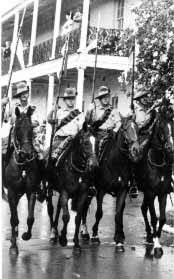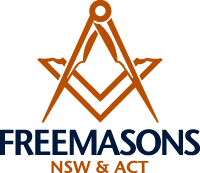
The Waler

Mention the name 'Waler' to members of Australian Army Cavalry Regiments and it immediately brings to mind stories of the men and horses of the Australian Light Horse and their part in the famous charge which led to the capture of Beersheba in October 1917 during World War I.
This wasn't the first time that the Australian Army had used Walers. Their participation in Australia's engagement in war goes back as far as the South African War when a squadron of the NSW Lancers, who had been training in England, became the first colonial troops to arrive in South Africa for active service against the Boers. They did so as Light Horse Cavalry and gained a reputation for courage, endurance and horsemanship.
In its History of the Waler, the Waler Horse Society of Australia Incorporated states: 'Walers were used overseas as remounts for the cavalry, as artillery horses, and as carriage and sport horses for both the British Army and the Raj in India. By 1867, the Waler was regarded by the British as amongst the finest cavalry horse in the world. Horses were exported from the colony as early as 1816 through private sales and the flourishing remount trade which ran from the 1830s till the 1960s.
'Walers were also supplied to the Army during World War II for use by the secret North Australia Observer Unit who carried out surveillance of the remote northern coastline. A small number also went with the army to Papua New Guinea and to Burma. However, during this time mechanisation had begun to supersede horses both in the army and in general'.
For some, the 'Waler' is the equivalent to Steven Spielberg's 'War Horse' in that the horse was used as a weapon of war. Roger Ebert, film critic, in his review of the film, states 'The message is universal, about the horror of war in which men and animals suffer and die, but for the animals there is no reason: they have cast their lot with men who have betrayed them.' The term 'betrayed' may sound harsh but of the 160,000 horses which served overseas in World War 1, only the mount used by Major General Sir William Bridges, Commanding Officer of the Australian Imperial Force in Europe, returned to Australia. The remainder stayed behind because of quarantine requirements.
Author Jack Scott wrote in the Australian Light Horse Association the Waler was not bred specifically as a war horse for the Australian Army but by early settlers to expand the pastoral industry. This was supported in 1886 by government statistician, T.A. Coghlan, who wrote: 'The colony is specially adapted for the breeding of saddle and light harness horses and it's doubtful if these particular breeds of Australian horses are anywhere surpassed. The bush horse is hardy and swift and capable of making long and rapid journeys when fed only on the ordinary herbage of the country: and in times of drought, with grass and water scanty, these animals often perform astonishing feats of endurance' (Wealth and Progress of NSW 1884, p348).
 Scott's article continues: 'There is no such thing as a Waler breed or indeed an identifiable type distinct from our Australian Stock Horse. Then why call a breed 'The Waler' and how did it occur? 'From our first settled areas in Sydney, exploration and settlement spread north, south and inland. One of the earliest of these was the Hunter River Valley, which proved to be one of the great horse breeding areas of the world.
Scott's article continues: 'There is no such thing as a Waler breed or indeed an identifiable type distinct from our Australian Stock Horse. Then why call a breed 'The Waler' and how did it occur? 'From our first settled areas in Sydney, exploration and settlement spread north, south and inland. One of the earliest of these was the Hunter River Valley, which proved to be one of the great horse breeding areas of the world.
'Pastoralists of English, Irish, and Scottish backgrounds imported the best bloodlines from their countries to breed superb horses for Australian needs. They were helped by climate, soil and pasture eminently suited to horse breeding.
'When the Indian Army began purchasing remounts for its Mounted Army, the Hunter Valley provided many of its horses. As the first settled, it had the numbers and the foresight in importing the best of English and Irish bloodlines. Owning one in India became a status symbol whether used as a military charger, for polo or for riding pleasure. To ride one was paramount to being behind the wheel of a Mercedes today. The Indian Officers in speaking of these horses classified them as “Walers” because of their New South Wales origin.
'The term “Waler” was then used to designate all of our horses that went to war, whether they came from Cape York Peninsula, Western Australia or anywhere else. To call them a breed is incorrect. They have always been Australian horses bred for that purpose and no other; however, is there a problem with giving these magnificent animals that have served with such distinction a special name? Those that were used for military service deserve a distinctive title and to the Australian soldiers from the Light Horse Regiments they will always be Walers'.
A monument erected in Sydney by returned soldiers honours the horses that did not come home. It is inscribed 'by members of the Desert Mounted Corps and friends, to the gallant horses who carried them over the Sinai Desert into Palestine, 1915–19. They suffered wounds, thirst, hunger and weariness almost beyond endurance but they never failed. They did not come home.'
Article extracted from Freemason magazine, June 2014, pages 20 and 21.


